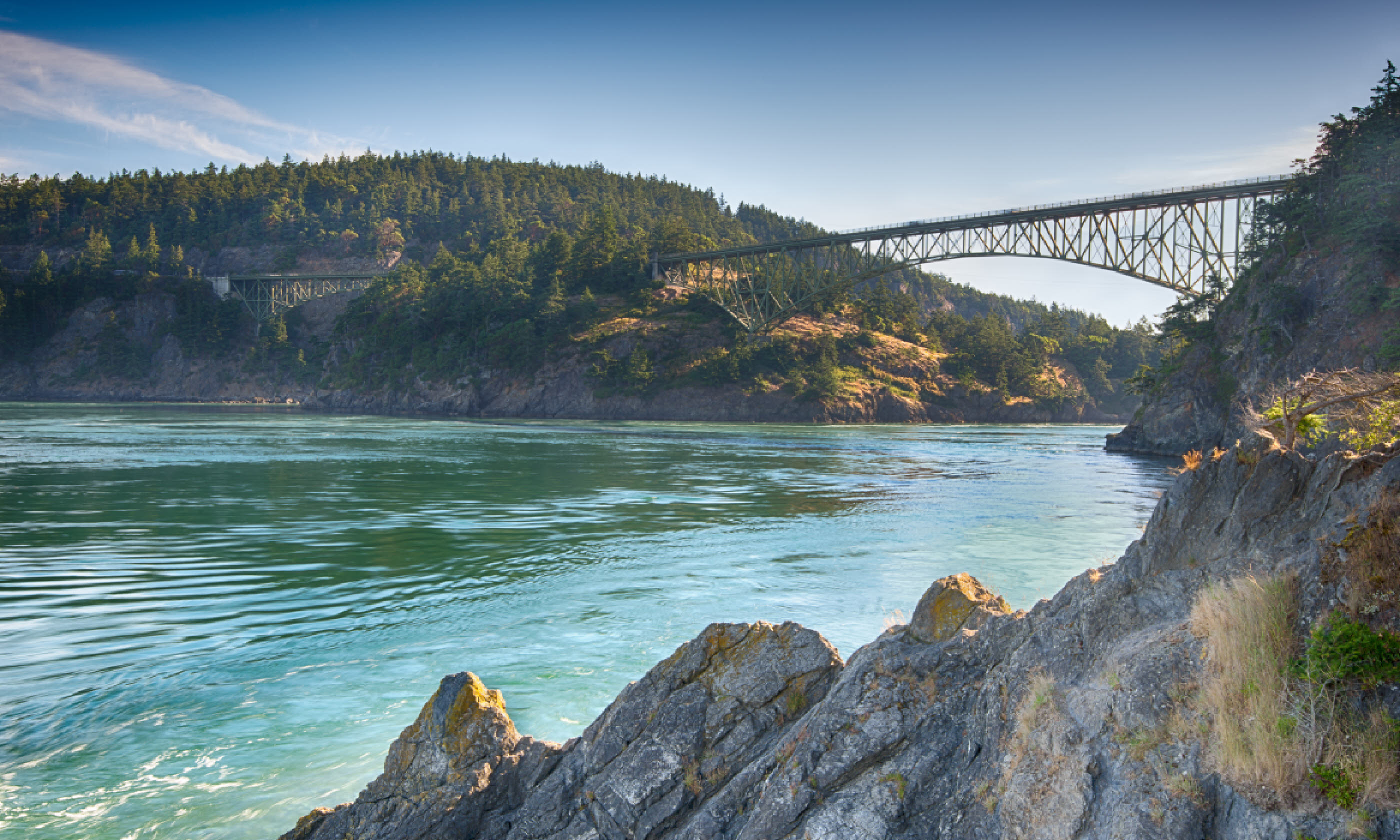
Author Elizabeth George discovers smugglers, social responsibility and dead men walking on her trip to this little-known island
Whidbey Island sits gloriously in a body of water called Puget Sound, where the Pacific Ocean has for eons carved its way into the state of Washington, spreading south to the capital city of Olympia, touching on the hilly beauties of Seattle, and ultimately lapping against a multitude of islands that sprinkle the Strait of Juan de Fuca.
Shaped like an old fashioned telephone receiver from the era when phones actually had both receivers and bodies, Whidbey is the largest of these islands. It holds in its grasp the second oldest city in the state – a tiny burg called Coupeville filled with Victorian houses and a seafront with shops that have acted as New England villages for more than one movie maker.
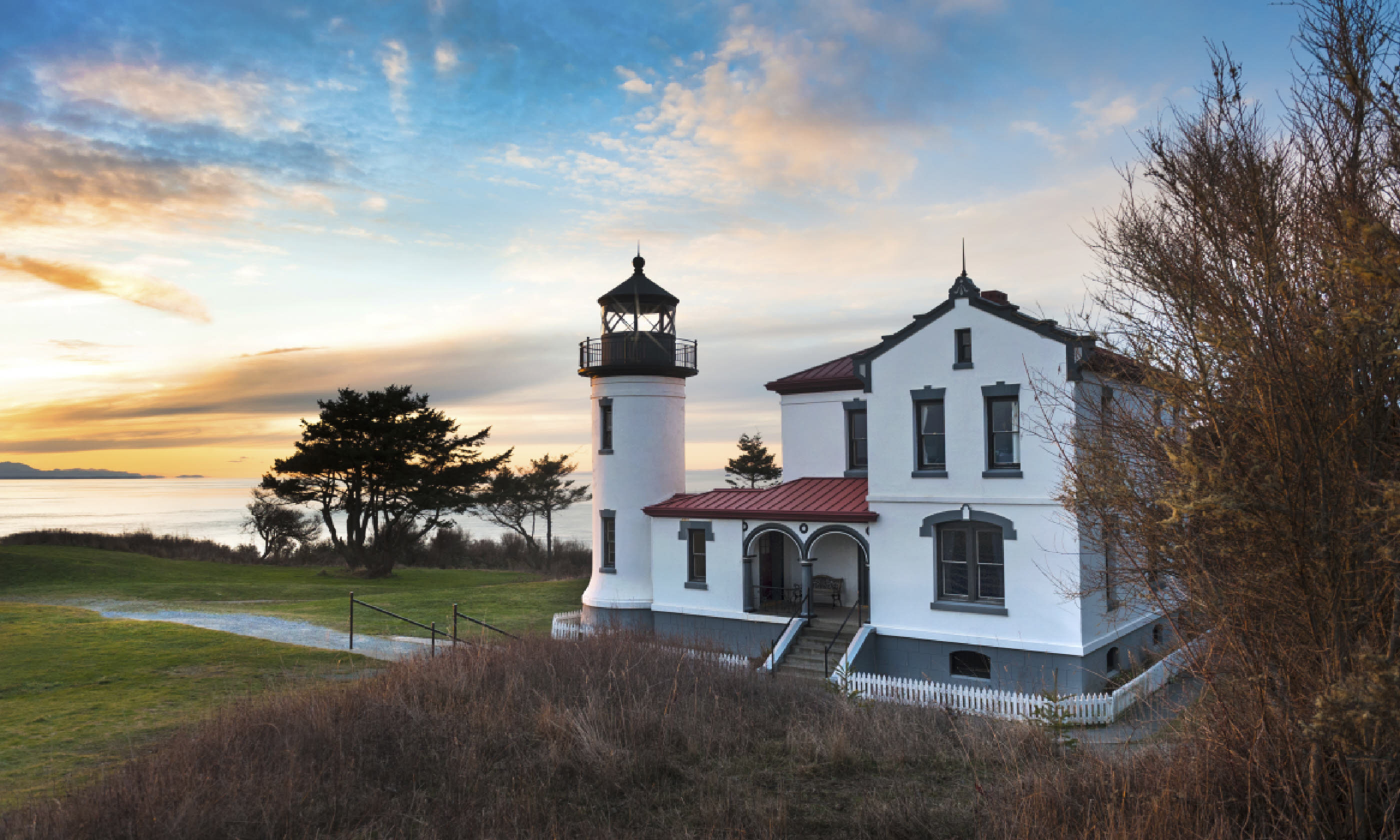
Admiralty Head lighthouse, Whidbey Island
It features deep, thick forests of Douglas firs, cedars, spruces, madrones, birches, alders, and maples. It offers beaches where seals and their pups come to relax in early summer and tall bluffs overlooking those beaches, from which ospreys and American bald eagles soar out of trees to dive and capture salmon below.
It’s a place where you can walk outside and find a great blue heron perched upon a solitary garden shed. It possesses an atmosphere where a hike in the woods can lead to half-ruined deer blinds hidden in the trees and ancient erratics the size of cottages deposited during the last ice age.
It has a lot to offer, this Whidbey Island, and what brought me to the place was the multiplicity of so many environments in a single stretch of land not 60 miles long. Farmland, prairies, forests, cliffs, beaches, and lakes abound. From the top of bluffs, visitors can spot the yearly migration of grey whales on their way from Mexico to Alaska, stopping off to feed upon the sand shrimp that live just off shore.
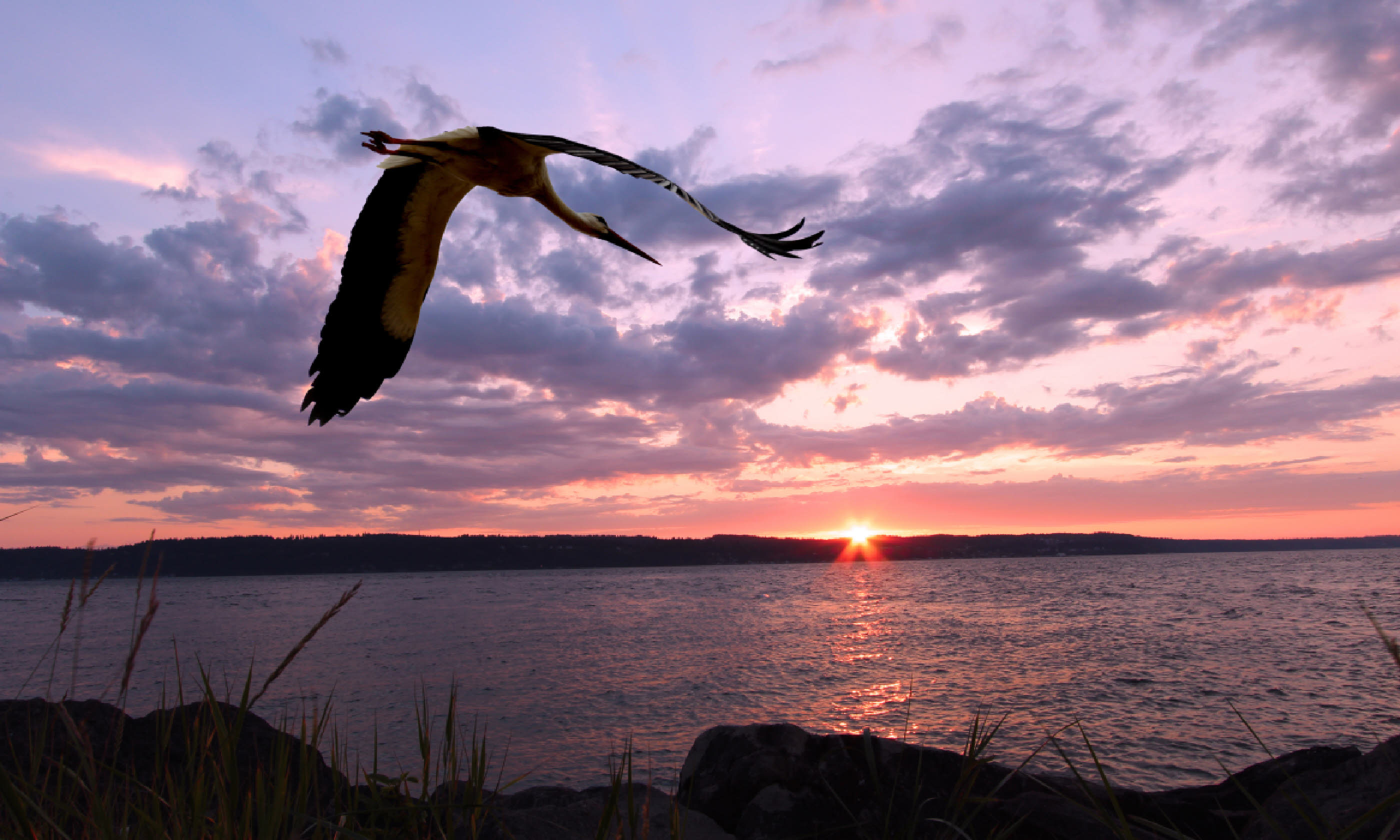
Sunset over Whidbey Island (Shutterstock)
One can be surprised by Puget Sound’s resident pod of orcas, who announce their presence by lifting their great heads from the water to “spy spot” boaters. Foodies can sample Penn Cove mussels or oysters just brought in from the beds off Coupeville. And keen boaters can sail... just about anywhere.
These are the pleasures that Whidbey Island offers, along with its multiplicity of open air markets, vineyards, wine tasting shops, craft festivals, art tours, music festivals, farm tours, animal festivals, garden tours and every possible kind of fundraising event under the sun.
The town of Langley alone – population 1,100 happy souls – is the home of four live theatre companies, two orchestras, a language school, a dance company, and the Northwest Institute of Language Arts, which is the only fully accredited low residency MFA programme in the United States. Incredible, no? But, of course, there is another side to the place.
Whidbey Island, like all locations where people settle, carries with it a sense of history and as is the case with most histories, there are dark moments within it. Place names give a sense of what has gone on here from the moment of its discovery by George Vancouver in 1792 and, more important, its circumnavigation by Joseph Whidbey in that same year.
Smugglers Cove, for example, tells a tale about what was brought to the shores secretly to avoid taxation and to avoid the law: not only rum and brandy and other spirits but also human cargo in the form of Chinese workers set to labour like slaves on railroads and in logging ventures. Both human cargo and contraband were hidden in caves, crevices, and pits that are excavated on the shores of Smugglers Cove to this day by those hoping to find treasure... or perhaps something else.
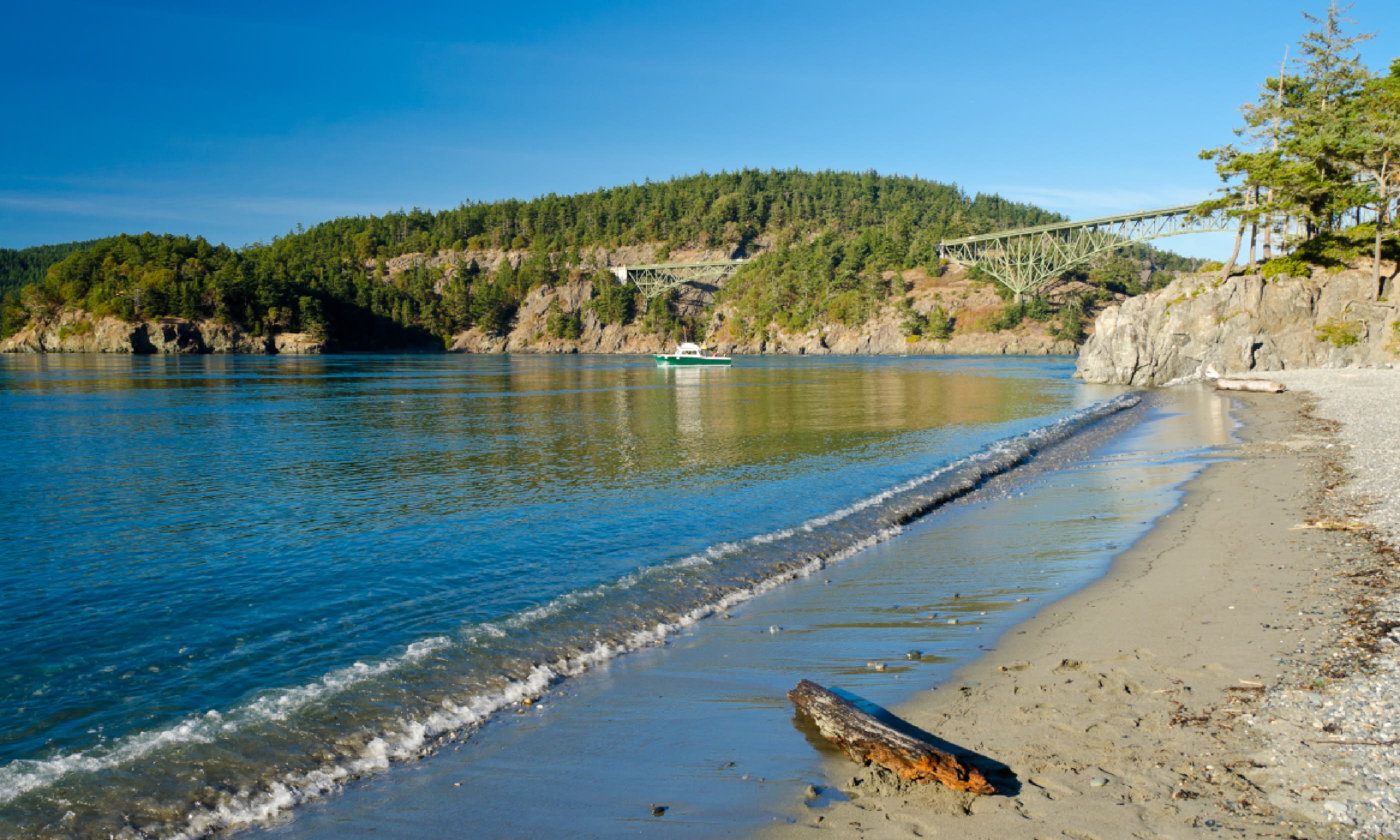
Deception Pass Bridge
Useless Bay speaks of the despair felt by those early naval explorers who discovered, to their dismay, that the lovely body of water into which they had ventured was, alas, exactly as described. For when a boat sails in and the tide shifts, the boat is stranded till the next tide comes. And perhaps this is what happened to the mysterious Spanish Galleon that is purportedly landlocked and long buried a few hundred yards inland from Maxwelton Beach, in a farmland field where more than one person has dug for Spanish treasure in vain.
And what of Mutiny Bay, Fisherman’s Alibi, Possession Point, Deception Pass, and Lovers Grove? All of them have stories to tell, only some of which are steeped in island history.
Whidbey Island is a place where the best and the worst of human nature is readily apparent. The island’s best shows its face in the multitude of organisations that over the years have been established and have thrived to help anyone who runs into misfortune.
Friends of Friends pays the health expenses of those who cannot afford them; Hearts and Hammers repairs the homes of those unable to do so; Mother Mentors goes into the homes of newborns to assist women in the early days of caring for an infant; Whidbey Island Nourishes provides free lunches to needy children seven days a week and 52 weeks per year; Goosefoot restores commercial buildings and turns them into viable businesses to employ islanders; the Whidbey and Camano Land Conservancy negotiates for the purchase of forestland, wetland, seashore, bluff, and prairie to preserve the rural nature of the island; Whidbey Animal Improvement Fund takes in dogs and cats in a no-kill shelter. And on and on and on.
It would be idyllic were it not for the dark side, for every place has its dark side as well. The forests on the island supply habitats for deer, raccoons, owls, and coyote. But they also supply hideaway for methamphetamine labs, buried deep along dirt incisions beneath the trees...
Can there really be any doubt why I decided to set a second series of novels here on Whidbey Island? Double Bluff Beach calls for something untoward to happen there, doesn’t it? Dead Goat Road surely has its own tale to tell. Lone Lake’s glassy surface has to hide something solitary within its placid water surface. And Baby Island – just off shore in Saratoga Passage and disappearing with every tide – certainly suggests someone deposited there, to wait an unhappy fate in the freezing water of Puget Sound.
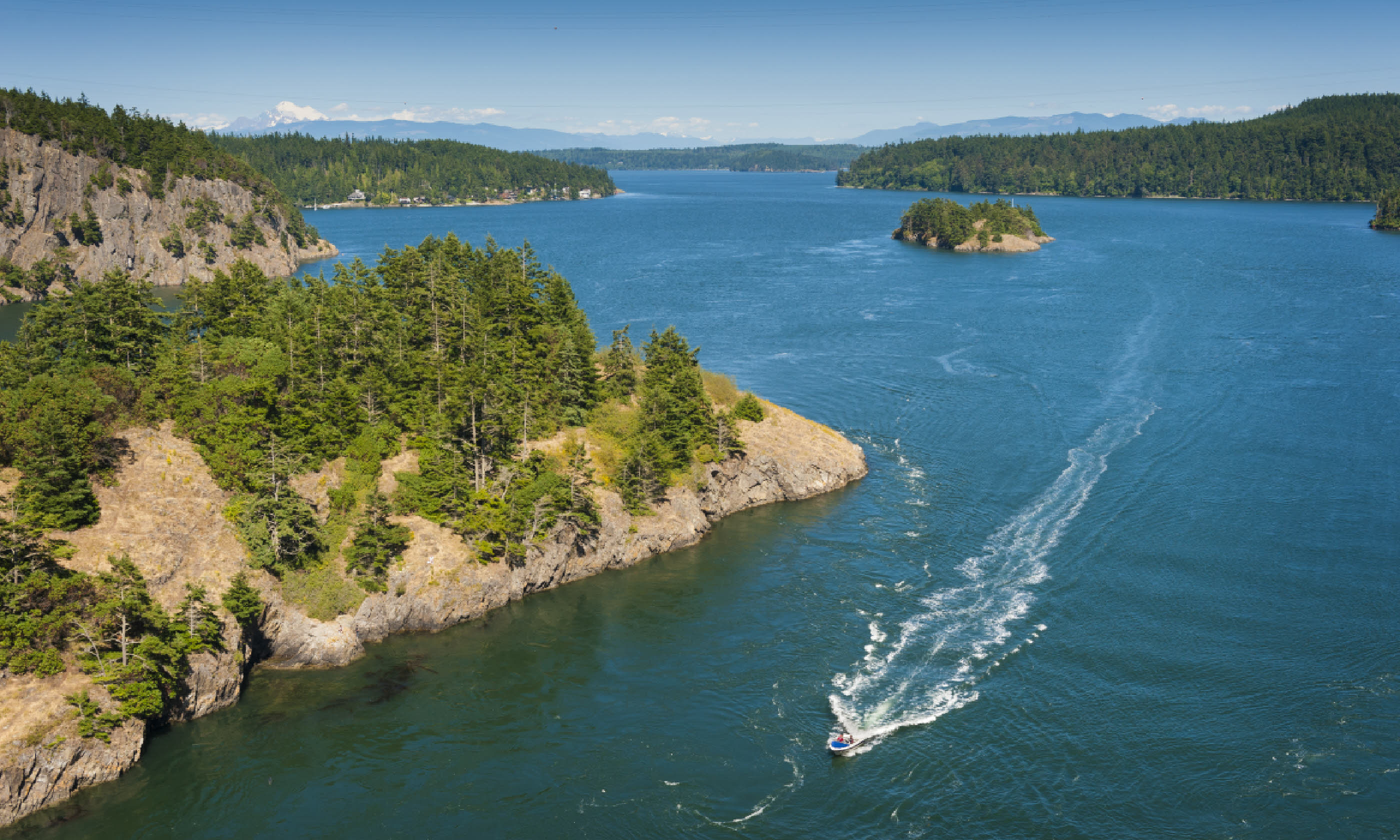
Deception Pass State Park (Shutterstock)
All of us call a different place home. I used to call southern California this, with its thoroughly boring daily sunshine, its endless summer, its surfing communities, and its plethora of traffic-clogged freeways. But I left its mundane familiarity once I first cast my eyes on Whidbey Island.
I like a place that suggests the best and the worst of human nature, the best and worst of nature itself. From its social conscience to its murderous rages, from its dabbled fawns on the roadside to its orcas on the hunt for seals, Whidbey has offered me exactly that.
 Elizabeth George's book Just One Evil Act (Hodder & Stoughton) is set on the mysterious Whidbey Island and is available to buy on Amazon.
Elizabeth George's book Just One Evil Act (Hodder & Stoughton) is set on the mysterious Whidbey Island and is available to buy on Amazon.
Main image: Early Light at Deception Pass Bridge (Shutterstock)